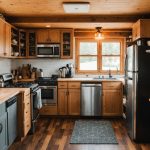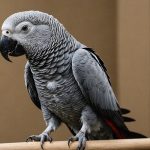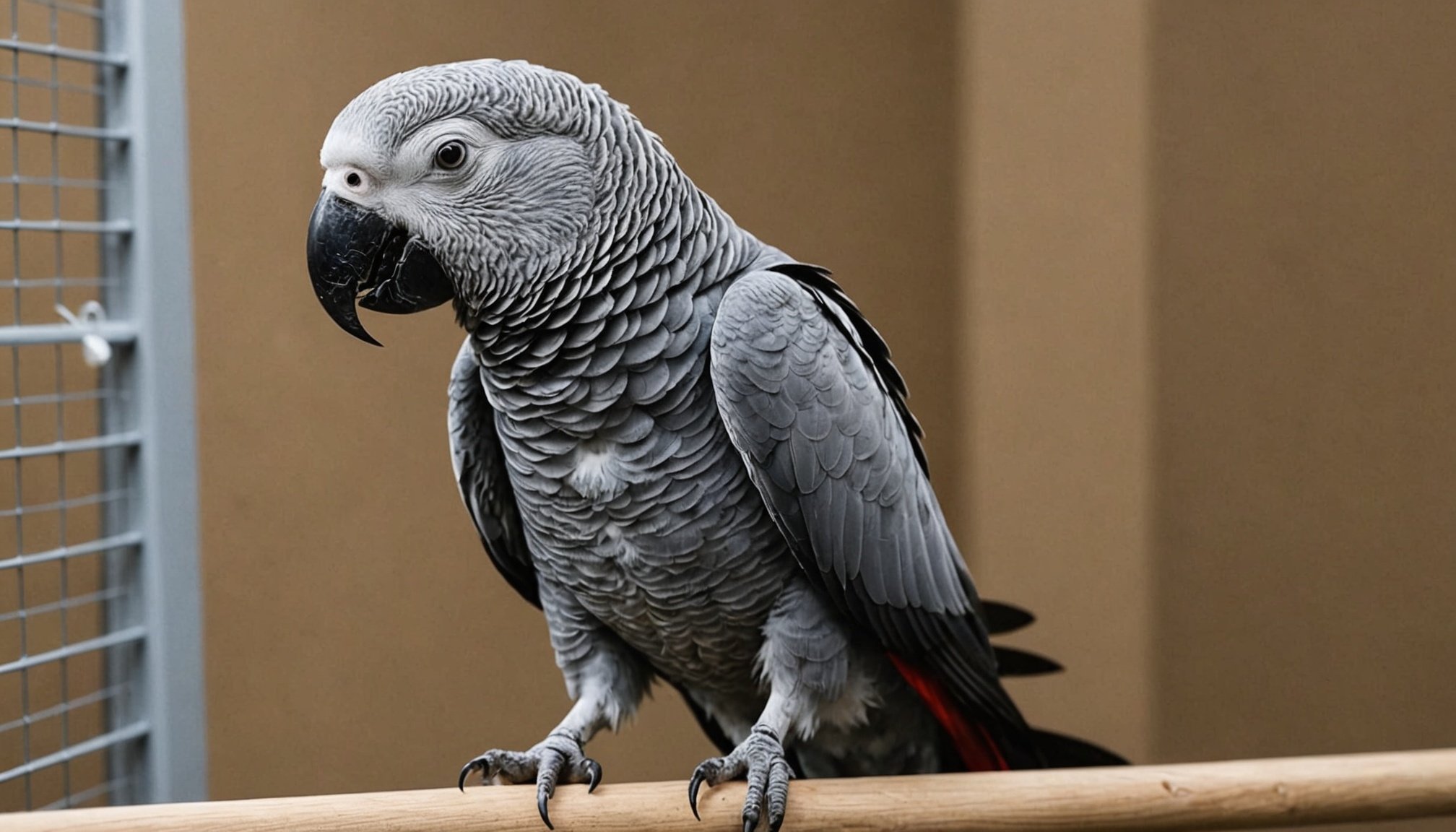Importance of a Secure Habitat for African Grey Parrots
Creating a secure habitat is vital for the well-being of African Grey Parrots. These intelligent birds require environments tailored to meet their specific safety needs. Inadequate enclosures can expose them to numerous risks, from environmental hazards to predation by other animals.
The design of a secure habitat plays a crucial role in safeguarding these birds. Parrots are naturally curious and may be prone to exploring unsafe areas, increasing the potential for injury. Consequently, ensuring that living spaces are well-secured contributes to their overall welfare, preventing accidental harm.
Also to see : Top techniques for reducing shedding in double-coated dog breeds: a comprehensive guide
A secure habitat not only protects from physical threats but also supports mental and emotional health. Feeling safe allows African Grey Parrots to exhibit natural behaviours, contributing to a reduction in stress and anxiety. This improved sense of security is fundamental for maintaining a healthy disposition.
In summary, constructing a robust and secure habitat for African Grey Parrots addresses a dual purpose: protecting against external dangers while fostering an atmosphere where they can thrive. Prioritizing such considerations is a necessary step in ornithological care, ensuring the best possible quality of life for these captivating creatures.
This might interest you : Ultimate guide to effortlessly introducing a new ferret to your established crew
Selecting the Right Cage for Your African Grey Parrot
Choosing the appropriate Cage Selection is paramount for ensuring a safe African Grey Habitat. These intelligent creatures need ample room to stretch and exercise, significantly contributing to their physical and mental well-being.
Size and Space Requirements
The size of the cage is crucial. African Grey parrots thrive in cages that accommodate their expansive wingspan and active nature, generally recommended to be at least 24x36x48 inches. Such dimensions allow the parrot ample space to move, reducing the risk of injury and promoting healthier behavior.
Materials and Construction
Regarding Materials and Construction, the cage should be made from durable, non-toxic materials. Stainless steel is often preferred due to its resistance to corrosion and ease of cleaning. It’s vital to choose materials that withstand the test of time while being safe for exploring and gnawing.
Design Features for Safety
The design features of the cage should prevent escape and potential harm. Consider safety aspects like secure locks, smooth edges, and proper bar spacing to prevent head entrapment. These features not only ensure the parrot remains within their confines but also minimizes the risk of injury, proving essential for comprehensive parrot care.
Creating a Stimulating Environment
A stimulating environment is essential for the well-being of African Grey Parrots, catering to their need for mental stimulation and enrichment. These intelligent birds thrive in dynamic settings that challenge their cognitive abilities and satisfy their curiosity.
Types of Toys and Foraging Options
Providing a variety of toys and foraging options is crucial. Choose toys that encourage problem-solving, such as puzzle feeders, which can be filled with treats. Such toys mimic their natural foraging behaviors, keeping their minds active and engaged.
Perches and Climbing Structures
The inclusion of diverse perches and climbing structures in the habitat supports their physical and mental health. Offer perches at different heights and textures to stimulate foot health and climbing structures to promote exercise. This variety encourages exploration, mirroring their natural habitat.
Environmental Enrichment Techniques
Implementing environmental enrichment techniques like changing the layout or interacting with the parrot can prevent boredom. Rotate toys and rearrange perches regularly to keep the environment refreshing. Techniques such as training sessions or interactive playtime further stimulate their minds, improving their overall happiness and well-being. By focusing on mental stimulation and enrichment activities, we can ensure that African Grey Parrots lead fulfilled, enriched lives.
Designing the Habitat Layout
Ensuring a well-organized habitat layout is fundamental in promoting African Grey comfort. By creating distinctive zones, parrots can experience a balanced environment conducive to their various daily activities.
Zoning for Safety and Comfort
To enhance the safety and comfort of your parrot, design your habitat with separate zones for feeding, playing, and resting. These divisions allow African Greys to navigate their environment confidently, reducing stress by providing predictable spaces.
Arrangement of Toys and Perches
Strategically placing toys and perches is crucial. Consider arranging perches at different heights and angles to encourage natural movement and exploration. Rotating toys regularly keeps engagement high, preventing boredom and encouraging physical activity.
Visual Barriers and Safe Spaces
Visual barriers can be invaluable helpers in reducing parrot stress. Incorporate elements like small partitions or cloths to create private spaces within the cage. These allow African Greys to retreat when they need solitude, supporting their emotional well-being. Establishing a well-thought-out habitat is key to nurturing healthy and content African Grey Parrots.
Ensuring Safe Materials and Accessories
African Grey Parrots require safe materials and habitat accessories to avoid potential health hazards. Selecting safe materials for their environment is paramount.
Identifying Safe vs. Toxic Materials
It’s crucial to identify safe materials such as untreated wood and non-toxic metals. Avoid materials containing lead or zinc, as these can prove toxic. Regularly check existing accessories for wear and potential hazards, ensuring they remain safe for gnawing and interaction.
Recommendations for Accessories
When choosing habitat accessories, opt for natural fiber ropes and stainless-steel components. Such items provide entertainment while maintaining the parrot’s safety. Perches made from natural wood like eucalyptus or apple trees are excellent choices, as they promote foot health naturally.
Maintenance and Safety Checks
Conducting routine maintenance and safety checks of the parrot’s habitat can prevent accidents. Regularly inspect for loose wires, chipped paint, or damaged toys. Remove any hazardous items promptly to sustain a risk-free environment. By ensuring only safe materials and reliable habitat accessories are present, the well-being of African Grey Parrots is significantly enhanced. This dedication fosters a secure and nurturing atmosphere for vibrant, healthy lives.
Addressing Behavioral Needs of African Grey Parrots
Understanding the Behavioral Needs of African Grey Parrots is essential for fostering healthy and happy birds. These intelligent creatures require thought-out social interactions and proper environmental stimuli to thrive.
Understanding Social Behavior
African Grey Parrots are inherently social birds, necessitating frequent Parrot Interactions with their caregivers. Regular interaction helps them develop trust and emotional bonds. Experts recommend spending at least an hour daily interacting, including talking and playing to keep them engaged.
Signs of Stress and Anxiety
Recognizing signs of stress and anxiety is vital for maintaining your parrot’s mental health. Look for indicators such as feather plucking, aggressive behaviour, or changes in vocalisation. These symptoms may suggest inadequate stimulation or insufficient social interaction. Identifying and addressing the cause can prevent long-term psychological issues.
Interaction Tips for Owners
To ensure fulfilling Parrot Interactions, owners should provide a variety of activities. Incorporate training sessions to teach new tricks, which can be stimulating for African Greys. Also, use positive reinforcement methods to encourage desired behaviours. By attending to their Behavioral Needs, owners can significantly enhance the quality of life of their African Greys, resulting in well-adjusted and content companions.
Incorporating Expert Opinions and Resources
Safeguarding the welfare of African Grey Parrots hinges on integrating Expert Advice and reliable Parrot Care Resources into their care regimen. Engaging with bird behaviorists offers invaluable insights into the specific behavioural patterns and needs of these parrots. Avian experts can provide tailored recommendations on habitat layouts, social interactions, and behaviour management techniques, ensuring a nuanced understanding of your parrot’s well-being.
Participating in online communities and support groups can be immensely beneficial. These platforms allow for sharing experiences and garnering practical tips from fellow parrot owners. Connecting with others can aid in understanding common challenges and effective solutions, fostering a supportive network for parrot care enthusiasts. Joining forums and discussion groups can also present opportunities to learn from seasoned parrot caregivers and heed varied perspectives.
Recommended Reading and Guides serve as essential tools for parrot caregivers seeking deeper knowledge. Books and publications from reputable avian specialists offer comprehensive guides on nurturing African Grey Parrots. These resources encompass a broad range of topics, from habitat enrichment to behavioural conditioning, helping owners make informed choices. By leveraging both community knowledge and authoritative resources, parrot owners can enhance their caregiving expertise and ensure enriched lives for their feathered companions.







